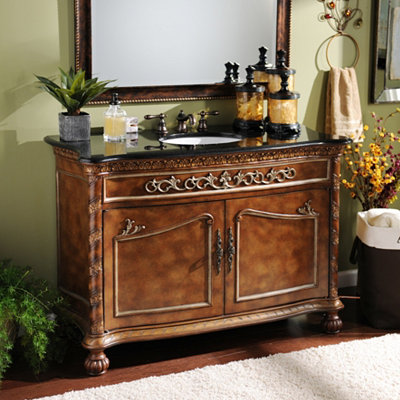Source: Kirkland's
Specialty retailers face stiff competition from both wholesale clubs selling at lower prices and online retailers offering a larger assortment. Despite such a challenging environment, Kirkland's (KIRK -2.14%), a multi-channel specialty retailer of home decor and accessories, has stayed profitable and free cash flow positive in every year since fiscal 2009. It still increased its fiscal 2014 sales by 2.7% year on year and also recorded positive comparable-store sales growth over the same period, notwithstanding adverse weather and weak consumer sentiment. Kirkland's has managed to survive in this tough retail industry by focusing on its merchandising and real estate strategies.
Certain elements of Kirkland's success formula can be found with peers like Pier 1 Imports (PIRRQ) and Bed Bath & Beyond (BBBY).
Merchandising strategy
There are two key elements of Kirkland's merchandising strategy that set it apart from its peers.
Firstly, Kirkland's is positioned as a seller of quality home decor at a reasonable price to its female, value-focused, middle-class American customer base. A large majority of Kirkland's products are priced below $20, making it affordable and attractive for bargain hunters to shop at Kirkland's. Moreover, Kirkland's can typically price its products below the competition, such as department stores, because it concentrates its purchasing power with large orders of single items.
Secondly, Kirkland's has the ability to change its merchandising mix rapidly to suit customers' needs and market trends. It has information systems in place to monitor sales trends of individual items, allowing it to order more of in-trend, fast-selling items and cull slow-moving ones. Kirkland's also tends to be opportunistic, devoting a larger selling space to gifts and seasonal merchandise in anticipation of the holiday season.
Its peers also place a strong emphasis on merchandising. Pier 1 Imports, a specialty retailer of imported decorative home furnishings, boasts a high proportion of exclusive products at approximately 95% of its merchandise mix. Pier 1 Imports sources its decorative home furnishings from foreign craftsmen who make their own products by hand in small factories and cottage industries. Other specialty retailers may claim to have exclusive supply agreements or their own manufacturing facilities. But it will be difficult for them to match Pier 1's product uniqueness because of the creative inputs of the individual craftsmen who work with Pier 1.
Merchandise presentation is another key element of a successful merchandising strategy. Bed Bath & Beyond presents groups of related product lines together in specific areas of its stores to simulate purchases. This is similar to what Kirkland's does, grouping complementary merchandise together in its stores to encourage cross-category add-on sales. Furthermore, Bed Bath & Beyond employs the use of simple modular fixtures so that it can change its merchandise presentation easily to capitalize on promotions and holidays.
The success of Kirkland's merchandising strategy is reflected in its consistently high inventory turnover. Kirkland's has turned over its inventory at an average of 4.3 times since 2009.
Source: Kirkland's
Store growth strategy
Size matters in retailing, especially when seeking suitable real estate locations. With more than 1,000 stores in 50 U.S. states, Bed Bath & Beyond has stronger bargaining power with landlords when it comes to securing new store space. In fact, Bed Bath & Beyond has been the anchor tenant for many of its locations, such as the newly opened Liberty View Industrial Plaza in the New York borough of Brooklyn.
Kirkland's has adopted a different real estate strategy from Bed Bath & Beyond. While its store locations used to be equally divided between mall and off-mall locations in 2006, currently about 90% of Kirkland's stores are located in off-mall locations.
There are three key advantages associated with off-mall locations. Firstly, off-mall stores are larger than mall stores. Secondly, the rental costs on a per-square-foot basis tend to be cheaper for off-mall stores. Thirdly, off-mall stores are usually more visible, helping to increase customer footfall.
The results speak for themselves. In its 2013 10-K filing, Kirkland's commented that its new off-mall stores "generally experienced better financial results, primarily due to higher sales volumes."
Foolish final thoughts
The two biggest challenges for specialty retailers are what to sell and where to sell. Kirkland's has met these challenges head-on with its differentiated merchandising and real estate strategies, making it a good investment choice in a difficult retail environment.







